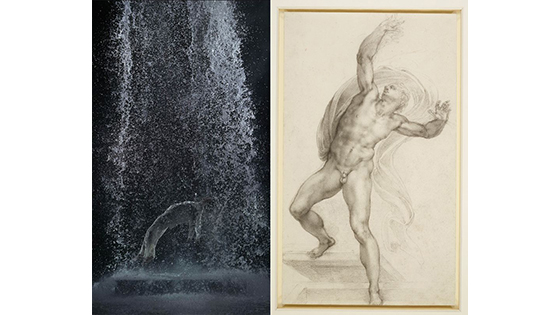Fondazione ICA Milano, a non profit space dedicated to the arts, contemporary culture, research and experimentation, opens its doors in Milan in the name of inclusion, under the direction of Alberto Salvadori.
The Institution inaugurates its program with the collective exhibition Apologia della storia – The historian’s craft, curated by Alberto Salvadori and Luigi Fassi.
ICA Milano has arisen from the passion, the need for discovery and the will for sharing of five people with a great dream: to build an ideal ecosystem for arts and contemporary cultures in which artists are able to find a free space of action where to stage the main urgencies of the intellectual research. The city of Milan, with its natural inclination toward hybrid projects between public and private, has offered the ideal framework to shape this new organism, which opens its space to the public Friday, January 25, 2019. Directed by Alberto Salvadori, ICA Milano is a private foundation merging different energies and protagonists of the art world: artist, collectors, art lovers and professionals. The exhibition and the Institute’s activities represent a dedication to offering the city and general public an opportunity to understand, share and participate in the attitudes and nature of the Institute.
Exhibitions, art publishing, ceramics, cinema, performance, music, literature, seminar activity, education and much more will create a path toward interdisciplinary and transmedial activities. ICA Milano is the expression of a precise “Milanese” identity which historically connects private initiatives with the institutional dimension and finds its inspiration within the “give back” culture, that is to say, through giving back in order to share. Following the model of the pioneering experience held by the first Institute for Contemporary Arts, born in London in 1946 by a collective of artists, intellectuals and philanthropists, ICA Milano will be an active and propositional presence, supporting the most stimulating artistic production of our times and likewise being a breeding ground of ideas.
ICA Milano is pleased to present its first project: the collective exhibition Apologia della storia – The historian’s craft, curated by Alberto Salvadori and Luigi Fassi opening on January 24, 2019. The title of the show is inspired by the foundational book Apologie pour l’histoire ou Métier d’historien written in 1944 (and published posthumous in 1949) by one of the main intellectuals of the modern culture, French historian Marc Bloch. Bloch’s reflection on historiography has led the author to analyse the practical use of history and the historian’s craft. Bloch introduces history as the discipline for knowing the human being in society, which fulfils an interpretative function through a methodology that promotes an approach committed to an equal and respectable representation of all the histories. Stepping away from a typical syndrome of our time, the “judgment mania,” the exhibition unveils hidden stories and provides methodological suggestions in which the recovery of collective memory and its role becomes the central element for each contemporary society. The parallelism between history and art is thus necessary in order to read the two disciplines as complementary elements in human’s knowledge, as a continuous practice of change against immobility that pushes the human being to constantly question him/herself. Through the works and the practices of the invited artists, the exhibition reveals and deepens stratifications, ambiguities and dissonances in history. Such a strategy represents a fundamental moment within the development of the institution and a field of research that will be further investigated in the future activities of ICA Milano’s cultural program.
The exhibition gathers together works by: Yto Barrada (FR-MA), Lothar Baumgarten (DE), James Lee Byars (USA), Nanna Debois Buhl (DK), Ryan Gander (UK), Haroon Gunn-Salie (ZA), Arjan Martins (BR), Santu Mofokeng(ZA), Antonio Ottomanelli (IT), Paul Pfeiffer (USA), Javier Téllez (VN-USA), Mona Vatamanu & Florin Tudor(RO).
Apologia della storia – The historian’s craft
January 25–March 15, 2019
ICA Milano
Via Orobia 26
20139 Milan
Italy
image: ph. Dario Lasagni















